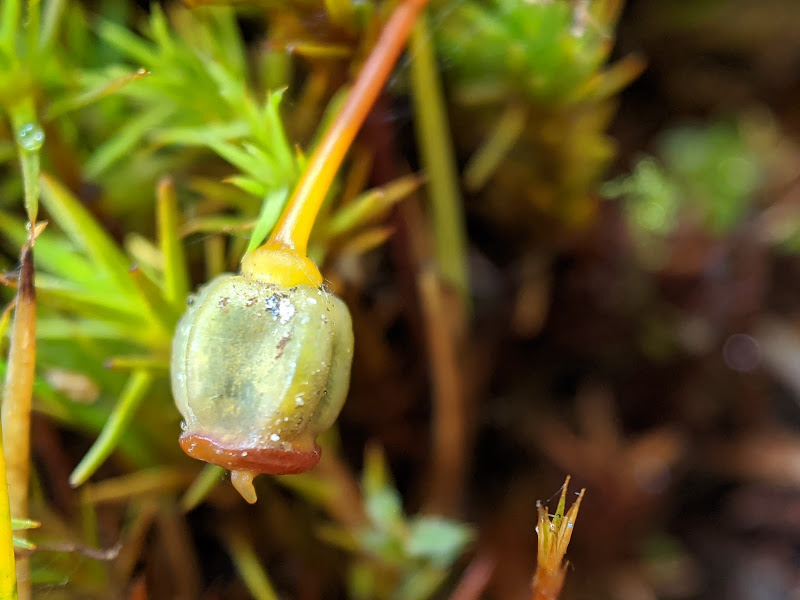Polytrichum
Dioicous or polygamous. Loose to compact tufts. Aerial stem simple or branched, usually with rhizoids confined to base, rarely tomentose throughout (not in Victoria). Leaves scale-like at stem base, becoming larger toward stem apex, linear-lanceolate from a sheathing base, erect-spreading to squarrose when moist, appressed or erect-spreading when dry, with most of adaxial surface covered with lamellae, except for up to 11 rows of cells along margins; lamellae to 10 cells tall; apex acute or acuminate, with an awn; costa excurrent; margins entire, serrulate or serrate, plane, upturned or inflexed, unistratose; laminal cells ovate to subquadrate or hexagonal, becoming rectangular or linear in sheath, smooth. Capsule erect to horizontal, short-rectangular or ovoid (not in Victoria), symmetrically 4-angled, rarely 5–6 angled (not in Victoria), with stomata. Operculum umbonate or rostrate. Calyptra cucullate, densely hairy. Peristome of 64 teeth, with or without ridges on internal surface, attached at maturity by their apices to the epiphragm between downward pointing sacculi, to the rim of the epiphragm, or rarely via erect epiphragm teeth that are shorter than wide (not in Victoria).
Cosmopolitan with around 80 species; three species in Victoria.
Polytrichum is broadened here to include the closely related Polytrichastrum sect. Aporotheca, which includes Victorian Polytrichum formosum Hedw. (See Polytrichastrum profile). Under this revised circumscription, Polytrichum is defined by capsules that are usually 4-angled and have 64 peristome teeth fused to an epiphagm at its rim or in spaces between downward pointing rounded lobes (sacculi) along the margins (Bell & Hyvönen 2010).
Polytrichum is an early coloniser of open or peaty soil (Hyvönen 2006).
 Spinning
SpinningBell, N.E.; Hyvönen, J. (2010). A phylogenetic circumscription of Polytrichastrum (Polytrichaceae): Reassessment of sporophyte morphology supports molecular phylogeny. American Journal of Botany 97: 566–578.
Hyvönen, J. (2006). Polytrichum, in McCarthy, P.M. (ed.), Flora of Australia, Mosses 1, Vol. 48, pp. 140–143. ABRS and CSIRO, Canberra and Melbourne.

